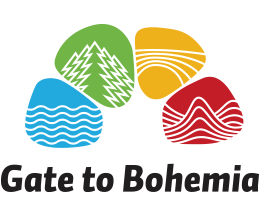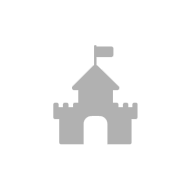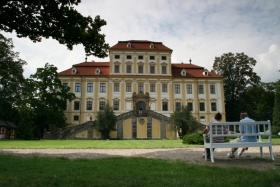At the foothills of the Krušné Mountains, between Litvínov and Duchcov right in the centre of the town of Osek we will find a national historic landmark, the Cistercian Monastery. This architecturally valuable monastic complex was founded already in the late 12th century. The complex is dominated by the large abbey Church of the Assumption of the Virgin Mary, founded in 1207 as a Roman three-hall basilica. Between 1712 and 1718 the complex was reconstructed in the Baroque style by architect Octavio Broggio. The most valuable object of the monastery is considered an old convent – one of the oldest Gothic rooms in Bohemia, whose eastern wing with a magnificent chapter hall was built around 1240. The new convent, together with a library and chapel was built in the early 18th century. In addition to the old convent, the stone carrel in the chapter hall is also a very valuable archeological piece. This remarkable work supported by two knot-connected columns is included in the UNESCO monument heritage list. A Romanesque portal connects the church with the cloister. The Baroque convent and prelate buildings were added between 1705 and 1725. At the same time, a hospital and a terraced garden were built. In the entry wing we may find an exhibition focusing on the history of the monastery and its order. During guided tours we will visit the Church of the Assumption of the Virgin Mary, the cloister with the chapter hall and a photo exhibition focusing on the monastery.
Our next goal, the picturesque town of Duchcov, is only 4 km from Osek. We may enter the castle directly from the town square. The castle was built after 1570 for Václav Popel of Lobkowice. However, the basis for the current three-wing building of the castle was achieved by the major reconstruction undertaken by Archbishop Jan Bedřich of Valdštein (Wallenstein). Around 1714 František Maximilián Kaňka, who also designed the architecture of the main altar, modified the appearance of the main hall. He modified the shape of the side wings, their ends and their connection with the iron bar wall with sculptures created by Matthias Bernard Braun. The French style castle garden, enriched with various water fountains and many statues created again by Matthias Braun, was designed by František Sochor. Other significant reconstructions have taken place between 1812-1818 during the reign of Josef Karel of Valdštejn, which repaired and turned the outer facades into a more realistic classical form. The Valdštein (Wallenstein) Hall with the family gallery, the castle armoury room, an exposition of Giacomo Casanova, a billiard room and castle servant rooms are all accessible to the general public. We can visit a gallery of contemporary art and various seasonal exhibitions as well as the chateau park.
From Duchcov we go towards Bílina, Most and Chomutov. Before reaching Chomutov we will take a right turn in Jirkov, towards Červený Hrádek (Little Red Castle) – our next destination. Originally, a castle built in the late 13th century by Albrecht of Seeberk used to be here. During the 15th century when the castle was being repaired and painted red, the name Červený Hrádek (Little Red Castle) became popular. Before the beginning of the 17th century, the castle owners and tenants were changing very quickly. Owners who used to own the castle include the Gersdorf family, the Lobkovic family, Adam Hrzán of Harasov and others. During the Thirty Year War the castle was plundered and damaged and gradually turned into an irreparable ruin. Under the reign of Jan Adam Hrzán during the 1660s a new chateau was built at the location of the original castle. The construction was completed in 1675. In the late 18th century the chateau facades were perfectly repaired and the small turret was removed . Also a large English park was founded here. Today, the chateau is a four-winged Baroque building with a rectangular layout, completed by a rectangular courtyard. In the chateau you will also see valuable interiors such as the richly decorated Knight's Hall and the Chapel of St. John the Baptist. Since 1996, the chateau has been owned by the town of Jirkov and it is a true centre of cultural and social events in Jirkov. Its seasonal cultural programmes attract people from the city and from other parts of the country as well. In 2006 an extensive reconstruction was finished and an Educational facility and Tourist centre were built here




































